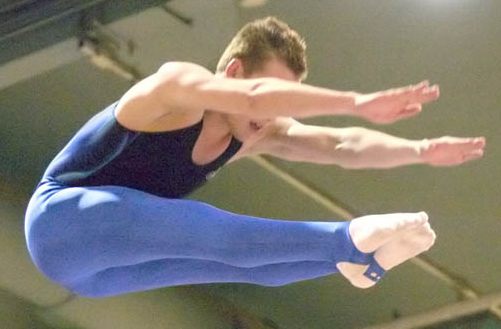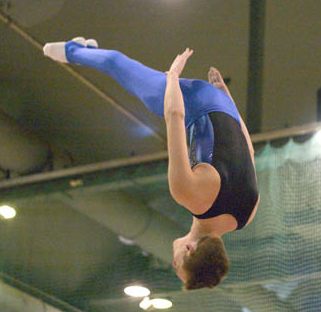OCR PE Unit 6.2
Gymnastics Based Sport - Trampoling
Skills
There are a wide variety of moves performed in trampolining. They are -
Straight jump - this jump is easy, just jump up in a straight position and land on your feet
Tuck jump - the arms come down while the legs are brought up
Straddle jump - this move is similar to the tuck jump however you perform a pointed position outwards rather than a tucked position
Techniques
There are more advanced and complicated moves in trampolining. These are the moves and how they are performed -
Barani
This move is like a somersault. The only difference is you twist your body as you perform the flip.
Double somersault
This move can be performed backwards or forwards. You perform a flip in the air two times and again, land with your body vertical.
In this move you perform a one and three quarter front somersault landing on your back.
Two and three
This move is almost the same as the one and three move, however you perform a two and three quarter front somersault instead.
Randy
In this move you perform a two and a half front somersault while your body is twisting.
Back In Full
In this move you perform a double back somersault with a full twist of the body only on the second somersault.
Full, Full
In this move you perform a double back somersault with a full twist of the body on both somersaults, rather than only on the second.
In this move you perform a double back somersault with a full twist of the body on both somersaults, rather than only on the second.
In trampolining moves are perfomed in one of these shapes -
Tucked - with your knees close to your chest
Picked - with hands touching both feet and arms and legs straight
Straight - body, arms and legs straight
Some coaching points for the three types of trampolining are
- Speed
- Precision
- Staying in time with other jumpers
- Keep to the routine
- Do not improvise
- Select a wide variety of artistic moves
Some drills used in trampolining are -
Chimney Concept drill -
The chimney concept drill involves a trampolinist performing straight jumps in the air and keeping on the cross for as long as possible.
This drill improves accuracy, precision, concentration and height.
Routine drill -
This drill involves a trampolinist to invent a quick and simple routine, containing only simple front and back flips. The routine should only last approxiamately 20 seconds.
Coaches can assess the trampolinists progress by them performing a short routine and from then can decide what needs to be improved. For example -
Trampolinist A is good at perfoming the Barani and the Double Somersault however needs to improve his back in full then the coach can set up a session for the trampolinist to improve these certain skills.
Tactics and Strateries
In trampolining you there is not a set opposition like in cricket, football or rugby, there is a variety of opponents. The aim is not to beat your opponents, it is to better their score.
The way you do this is by watching videos of other trampolinists and analyse what us good about their perfomance. From that, you can take the positives from their routine and introduce them into yours.
In synchronized trampolining it is important to stay in time with your partner. If there is a mess up with the timing then points can easily be reducted.
The main aim of trampolining is to use artistic and challenging moves that are put together well and to better the opposition. If the correct skills and techniques are performed then you can and will score very high.
The way you do this is by watching videos of other trampolinists and analyse what us good about their perfomance. From that, you can take the positives from their routine and introduce them into yours.
In synchronized trampolining it is important to stay in time with your partner. If there is a mess up with the timing then points can easily be reducted.
The main aim of trampolining is to use artistic and challenging moves that are put together well and to better the opposition. If the correct skills and techniques are performed then you can and will score very high.










No comments:
Post a Comment